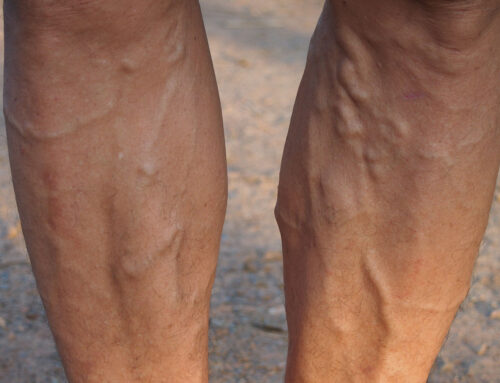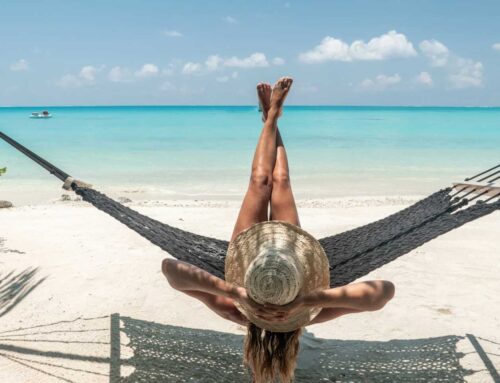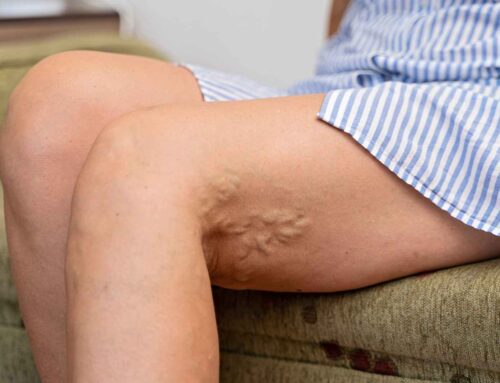As the winter months roll in, many individuals may not realize the significant impact that cold weather can have on vein health. Understanding the relationship between colder weather and vascular health is crucial for anyone looking to maintain healthy veins. Vascular experts emphasize the importance of recognizing how temperature influences blood flow, circulation, and ultimately, vein health. This article aims to shed light on the various ways cold weather affects your veins and provide strategies to protect them during the winter months.
How Does Cold Weather Affect Vein Health?
Understanding the Effect of Cold Weather on Blood Flow
Cooler weather has a profound effect on blood flow within the body. When temperatures drop, the body’s natural response is to conserve heat, leading to the constriction of blood vessels. Constriction of the veins reduces the diameter of the blood vessels, which in turn decreases blood flow to the extremities. As blood flow slows, it can lead to various vascular issues, that can impact your vein health. In colder weather conditions, the risk of blood pooling in the veins increases, which can exacerbate existing vein problems, such as varicose and spider veins.
The Role of Temperature in Vein Circulation
Temperature plays a critical role in vein circulation. In cold weather, our bodies prioritize core temperature maintenance, leading to reduced circulation in areas such as the legs and feet. This reduced circulation can cause discomfort and symptoms of poor circulation, including numbness, tingling, and cold extremities. For individuals already dealing with vein issues, such as varicose veins, the impact of cold temperatures can be particularly pronounced. The resulting decrease in blood flow can contribute to the progression of vein disease, making it essential to understand how to keep your blood flowing effectively during winter.
Why Cold Weather Can Lead to Vein Issues: Cold Weather Impacts
Cold weather can increase the risk of developing vein issues for several reasons. Firstly, the constriction of blood vessels caused by lower temperatures can lead to increased pressure within the veins. This pressure can exacerbate symptoms of varicose veins, leading to discomfort and potential complications. Additionally, the winter months often encourage a more sedentary lifestyle, with people spending more time indoors. This inactivity can further contribute to poor circulation, increasing the likelihood of blood clots and other vascular complications. Therefore, it is vital to be aware of how cold weather affects vein health and take proactive measures to mitigate these risks.
What Are the Effects of Cold Weather on Blood Flow?
The Impact of Cold on Varicose and Spider Veins
Cold weather can significantly impact the health and appearance of varicose and spider veins. It may constrict blood vessels and this can lead to increased pressure within these veins, causing them to become more prominent and uncomfortable. For those with existing spider veins, colder temperatures can exacerbate their appearance, making them more noticeable. Additionally, the combination of inactivity during winter and constricted blood flow can lead to further complications. Individuals with varicose veins may experience heightened symptoms, including swelling, aching, and discomfort, which underscores the need for effective vein treatment during the colder months.
Can Cold Weather Increase the Risk of Vein Problems?
Absolutely, cold weather can increase the risk of developing vein problems. As blood vessels constrict and circulation slows, the likelihood of blood pooling increases, particularly in the legs. This pooling can lead to a range of vein issues, including the exacerbation of varicose veins and the development of new vein problems. Moreover, the increased pressure in the veins can contribute to the formation of blood clots, which pose serious health risks. Understanding this connection between cold weather and vein health is essential for individuals looking to maintain optimal vascular conditions throughout the winter months.
How Can Cold Weather Affect Circulation in the Body?
The Relationship Between Cold Weather and Blood Flow
The relationship between cold weather and blood flow is one of constriction and reduced circulation. As previously mentioned, cold temperatures prompt the body to conserve heat by narrowing blood vessels. This physiological response can result in slower blood flow, particularly to the extremities. Consequently, individuals may experience symptoms of poor circulation, such as cold hands and feet. Maintaining healthy circulation during winter is essential to avoid potential complications related to vein health, especially for those with pre-existing conditions.
Signs of Poor Circulation During Winter Months
Recognizing the signs of poor circulation during the winter months is crucial for maintaining vein health. Common symptoms include cold extremities, numbness, tingling, and an overall feeling of heaviness in the legs. Individuals may also notice swelling or aching in the veins, particularly in the lower limbs. If these symptoms persist, it is advisable to consult a vein specialist for a thorough evaluation. Addressing poor circulation early can prevent the progression of vein issues and promote overall vascular health.
Tips for Maintaining Healthy Circulation in Cold Weather
To maintain healthy circulation during cold weather, several strategies can be employed. Firstly, staying active is key; engaging in regular physical activity can help keep blood flowing and prevent stagnation. Additionally, dressing warmly and layering clothing can help regulate body temperature and promote better circulation. Staying hydrated is also essential, as proper hydration supports overall vascular health. Furthermore, incorporating leg exercises and stretches can enhance blood flow and alleviate symptoms of poor circulation. These proactive measures can significantly contribute to keeping your veins healthy throughout the winter months.
What Should You Know About Seasonal Changes and Vein Health?
The Importance of Monitoring Vein Health During Seasonal Changes
Monitoring vein health during seasonal changes is vital for anyone concerned about their vascular health. As temperatures fluctuate, the body responds differently, and individuals with existing vein issues may experience heightened symptoms. Regular self-assessment can help identify any changes in vein appearance or discomfort levels, allowing for timely intervention. Understanding how seasonal changes affect your veins can empower individuals to take proactive steps in maintaining their vascular health, such as scheduling regular check-ups at a vein clinic.
How to Protect Your Veins in Cold Weather
Protecting your veins in cold weather involves a combination of lifestyle choices and practical strategies. Wearing compression stockings can help support healthy blood flow and reduce the risk of blood pooling in the veins. Additionally, staying active and avoiding prolonged periods of sitting or standing can promote circulation. Keeping warm through appropriate clothing and maintaining a healthy diet rich in antioxidants can also support vascular health. By being mindful of these factors, individuals can take significant steps to protect their veins during the colder months.
Consulting a Vein Specialist for Seasonal Vein Issues
If you notice any concerning symptoms related to your veins during the winter months, it is essential to consult a vein specialist. We can provide valuable insights into how cold weather affects your veins and recommend appropriate treatment options. Regular check-ups and free vein screenings can help detect potential issues before they escalate, ensuring that you maintain optimal vein health throughout the year. Seeking expert guidance can make a significant difference in managing seasonal vein issues effectively.
Are There Preventative Measures for Cold Weather Affecting Your Veins?
Strategies to Improve Blood Flow in Cold Conditions
Implementing strategies to improve blood flow in cold conditions is crucial for maintaining vein health. Regular physical activity, such as walking or stretching, can help stimulate circulation and prevent blood from pooling in the veins. Additionally, incorporating warmth into your routine, such as soaking in warm baths or using heating pads, can promote vasodilation, which enhances blood flow. Staying active and warm can significantly mitigate the negative effects of cold weather on your veins.
When to Seek a Vein Screening
Individuals should consider seeking a vein screening if they notice any unusual symptoms, such as increased leg pain, swelling, or visible changes in vein appearance. Early detection is vital in managing vein issues, and free screenings can provide valuable information about your vascular health. If you’re experiencing symptoms of varicose veins or poor circulation, don’t hesitate to consult a vein clinic for professional advice and assessment. If you are in the Tampa Bay area contact us now.
Conclusion
Cold weather can significantly impact vein health by causing blood vessels to constrict and reducing circulation to the extremities. This physiological response can exacerbate issues like varicose veins, spider veins, and other vascular conditions. However, understanding these effects and adopting preventive measures can make a substantial difference. Staying active, dressing warmly, staying hydrated, and incorporating vein-friendly habits into daily routines can help maintain optimal vein health during winter. If symptoms persist or worsen, consulting a vein specialist ensures timely intervention and appropriate care, promoting better vascular health year-round.






Leave A Comment